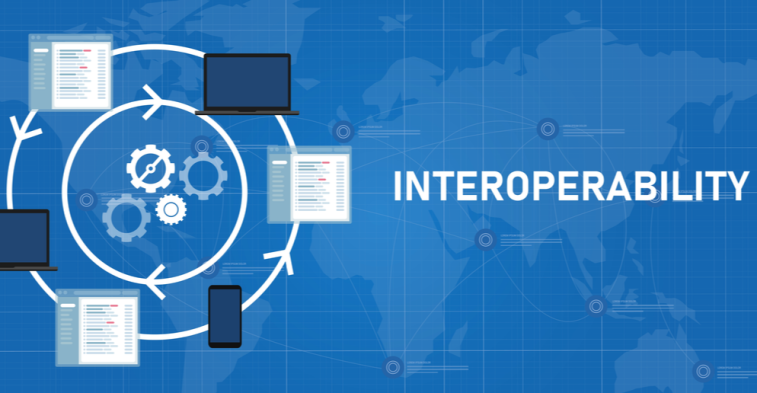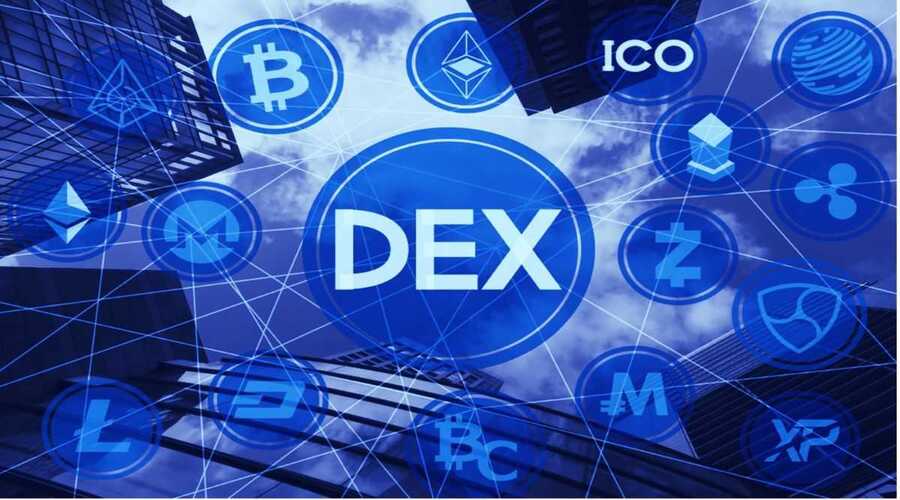Blockchain technology has revolutionized various industries, and one of its significant applications is decentralized exchanges (DEX). These platforms allow users to trade cryptocurrencies directly without the need for intermediaries. While DEXs have gained popularity, one critical challenge they face is the lack of interoperability among different blockchain networks. In this article, we will explore the concept of interoperability in decentralized exchanges and how it enables the seamless connection between various blockchain networks.
Introduction
Decentralized exchanges have gained popularity due to their ability to provide greater security, privacy, and control over assets. However, most DEXs operate on a single blockchain network, limiting their reach and liquidity. Interoperability in DEXs refers to the capability of these platforms to connect and interact with multiple blockchain networks, enabling seamless asset transfers and cross-chain trading.
Understanding Decentralized Exchanges (DEX)
Decentralized exchanges are digital platforms that facilitate peer-to-peer trading of cryptocurrencies without the need for intermediaries like banks or brokers. They operate on blockchain technology, where smart contracts execute and settle trades automatically. DEXs provide a more transparent and trustless trading environment compared to centralized exchanges.
Automated Market Making
Decentralized exchanges often employ automated market making (AMM) mechanisms to facilitate trading. AMMs utilize smart contracts and liquidity pools to enable users to trade assets directly with the pool rather than relying on order books. Understanding the role of AMMs in decentralized exchanges is essential for comprehending the mechanics behind liquidity provision and asset trading.
User Custody and Control
One of the key advantages of decentralized exchanges is that users have greater custody and control over their assets. Unlike centralized exchanges, where users’ funds are held by a third party, DEXs allow users to retain ownership and control over their private keys, enhancing security and reducing the risk of funds being compromised.
The Need for Interoperability

With the increasing number of blockchain networks and the growing popularity of decentralized finance (DeFi) applications, the need for interoperability in DEXs becomes evident. Currently, most DEXs are limited to a specific blockchain network, which restricts users to trade only the assets available on that particular network. Interoperability solves this limitation by enabling cross-chain transactions and expanding the range of tradable assets.
Interoperability Protocols
Various interoperability protocols have emerged to address the challenge of connecting different blockchain networks. These protocols establish standards and mechanisms for seamless asset transfers across chains. Some popular interoperability protocols include:
Cross-Chain Bridges
Cross-chain bridges act as connectors between different blockchain networks by locking assets on one chain and minting equivalent tokens on another chain. These bridges enable the transfer of assets across chains while maintaining their value and integrity.
Atomic Swaps
Atomic swaps utilize smart contracts to enable direct peer-to-peer trades between two parties on different blockchain networks. This protocol ensures that both parties fulfill the conditions of the trade before the assets are exchanged.
Sidechains
Sidechains are separate blockchain networks connected to a primary chain, often referred to as the mainchain. Sidechains enable faster and more scalable transactions by offloading some of the workload from the mainchain. Interoperability between sidechains and the mainchain allows users to transfer assets between chains.
Benefits of Interoperability in DEX
Interoperability in DEXs brings several benefits to traders and the blockchain ecosystem as a whole. Some key advantages include:
Enhanced Liquidity
Interoperability enables DEX users to access a broader range of assets from different blockchain networks. This increased liquidity improves trading opportunities, reduces slippage, and enhances price discovery.
Expanded Market Reach
By connecting different blockchain networks, interoperable DEXs offer traders the ability to tap into markets that were previously inaccessible. This opens up new investment opportunities and fosters the growth of decentralized finance.
Seamless Asset Transfers
Interoperability protocols ensure that assets can be transferred between different chains without the need for complicated manual processes. Users can easily send and receive assets across networks, promoting a frictionless experience.
Challenges and Limitations
While interoperability brings significant advantages, there are challenges and limitations that need to be addressed. Some common challenges include:
- Technical complexity: Developing and implementing interoperability solutions requires technical expertise and collaboration between different blockchain communities.
- Security risks: Interoperability introduces new attack vectors and potential vulnerabilities. Robust security measures are essential to protect users’ assets and privacy.
- Scalability concerns: Connecting multiple blockchain networks can strain the overall network capacity, leading to potential scalability issues.
Promising Projects in Interoperability
Several projects are actively working on improving interoperability in decentralized exchanges. These projects aim to create efficient and secure bridges between different blockchain networks. Some notable initiatives include:
- Polkadot: A multi-chain platform that enables communication and interoperability between different blockchains.
- Cosmos: A network of interconnected blockchains that allows the exchange of assets and data through the Inter-Blockchain Communication (IBC) protocol.
- Chainlink: A decentralized oracle network that provides real-world data to smart contracts, enhancing the interoperability of blockchain applications.
Ren Protocol
Ren Protocol is a blockchain-based protocol focused on facilitating interoperability between different blockchain networks. It enables the transfer of assets across chains through the use of decentralized custodians, which hold and manage the assets during the transfer process. Ren Protocol aims to provide a secure and scalable solution for interoperability in decentralized exchanges.
Suterusu
Suterusu is a privacy-focused interoperability protocol that aims to provide privacy protection for cross-chain transactions. By utilizing zero-knowledge proofs and advanced cryptography, Suterusu enables users to conduct confidential and secure transactions between different blockchain networks while maintaining their privacy.
The Future of Interoperability in DEX
As the blockchain ecosystem continues to evolve, interoperability will play a crucial role in connecting different networks and driving innovation. The development of robust interoperability protocols and the collaboration between blockchain communities will shape the future of decentralized exchanges. With increased interoperability, DEXs have the potential to become more inclusive, liquid, and user-friendly.
The Need for Interoperability
Expanding Token Ecosystem
Interoperability in decentralized exchanges is essential for expanding the token ecosystem. With multiple blockchain networks, each hosting unique tokens and assets, interoperable DEXs enable users to access a diverse range of digital assets, fostering innovation and growth in the crypto space.
Facilitating Cross-Platform Collaboration
Interoperability promotes cross-platform collaboration between different blockchain projects. It allows developers to combine the strengths of various networks and leverage synergies to build powerful decentralized applications (dApps) that span multiple chains. This collaboration leads to enhanced functionalities and utility for users.
Interoperability Protocols
Wrapped Tokens
Wrapped tokens are a form of interoperability protocol that represents tokens from one blockchain on another. They act as bridge assets, allowing users to trade and utilize tokens from different chains within a single DEX. Wrapped tokens enable cross-chain compatibility and liquidity by pegging the value of the token to its counterpart on another chain.
Interoperability Oracles
Interoperability oracles serve as intermediaries between different blockchain networks, facilitating the exchange of information and data. These oracles ensure the secure and reliable transfer of data across chains, enabling interoperability between DEXs and decentralized applications that rely on accurate and real-time information from multiple sources.
The Future of Interoperability in DEX
Interoperability as a Standard
As blockchain technology continues to evolve, interoperability is expected to become a standard feature in decentralized exchanges. With the development of robust protocols, interoperability will become more seamless, allowing users to access a wide range of assets and services across different chains without facing technical barriers.
Bridging Traditional Finance with Blockchain
Interoperability in DEXs has the potential to bridge traditional finance with the blockchain ecosystem. By enabling cross-chain transactions, traditional assets such as stocks, commodities, and real estate can be tokenized and traded on decentralized exchanges. This integration has the power to revolutionize traditional financial systems and make them more accessible and transparent.
Interoperability Protocols
Cross-Chain Asset Management
Interoperability protocols enable cross-chain asset management, allowing users to seamlessly manage and monitor their assets across different blockchain networks. This functionality provides a unified view of their holdings and simplifies portfolio management within a single interface.
Interoperability Testing and Standards
Ensuring interoperability requires rigorous testing and the establishment of industry standards. Interoperability testing verifies the compatibility and functionality of different protocols and implementations, ensuring seamless asset transfers between blockchain networks. Developing and adhering to standards allows for greater compatibility, collaboration, and interoperability across the blockchain ecosystem.
Conclusion
Interoperability in decentralized exchanges is a critical step towards creating a connected and accessible blockchain ecosystem. By enabling seamless connectivity between different blockchain networks, DEXs can offer enhanced liquidity, expanded market reach, and seamless asset transfers. However, addressing the technical complexities, security risks, and scalability concerns associated with interoperability remains crucial for its widespread adoption.
In conclusion, interoperability in decentralized exchanges plays a crucial role in connecting different blockchain networks and enabling seamless asset transfers. By implementing interoperability protocols and adhering to industry standards, decentralized exchanges can unlock benefits such as expanded market reach, enhanced liquidity, and improved user experiences. Promising projects like Polkadot and Wanchain are actively working towards achieving seamless cross-chain interoperability. As the blockchain ecosystem continues to evolve, the future holds even greater potential for interoperability, opening up new avenues for innovation and collaboration.

